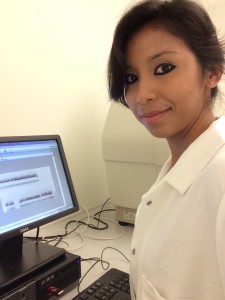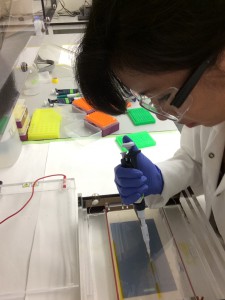Amy Ortega, Chapman College
Project: How good are gene-based biodiversity assessments?
An experimental comparison of morphology-based vs genetics-based assessments of floral biodiversity in arctic habitats
Advisor: Beth Shapiro
Past plant communities are traditionally inferred from morphology-based assessments. However, these methods are timing consuming and suffering from low resolution and biased taxon sampling. An alternative approach to these methods involves using a next-generation DNA sequencing approach known as DNA barcoding. Although this approach has been limited to ancient DNA studies, it may provide an efficient method for measuring contemporary assessment of above-ground to below-ground diversity in an ecosystem. The trnL (UAA) intron, a short and conserved sequence found in plants, was used to compare gene-based versus morphology-based assessments of contemporary floral biodiversity in the arctic ecosystem. An extensive arctic trnL DNA reference library was used to assess below-ground biodiversity. Information collected from morphology-based assessment was compared to the above-ground to below-ground arctic floral biodiversity. Following data analysis our results suggest that although analyzing soil DNA provides for an efficient and economical approach to understand changes in an ecosystem, morphology-based assessments should still remain an invaluable approach for surveying biodiversity of an ecosystem. Therefore a combination of morphology-based and gene-based assessments should be used for surveying biodiversity of an ecosystem.


